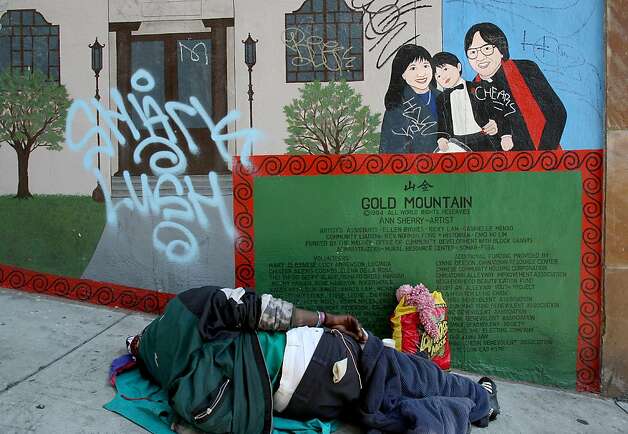“For more extensive information and commentary on this case, go to http://www.indybay.org/
Georgia Perry
SC Weekly: Dec 11, 2012

Linda Lemaster says she’ll appeal her conviction stemming from Peace Camp 2010. (Photo by Chip Scheuer)
Despite being shut down over two years ago, the loose threads of Peace Camp 2010 are still dangling in the county court system. After Dec. 6’s sentencing for Linda Lemaster, who received a misdemeanor for illegal lodging at Peace Camp and faces community service plus probation, the longtime homeless advocate and her attorneys have their sights set on an appeal they hope will take them all the way to the U.S. Supreme Court.
While Peace Camp 2010 was a protest against the camping ban in the city of Santa Cruz, the citations Lemaster and several other protesters received for sleeping on the county courthouse steps were not camping ban violations. They were misdemeanors for violating state Penal Code §647e, which prohibits “illegal lodging”—a citation that falls under the umbrella of “disturbing the peace,” including such acts as public intoxication and prostitution.
“What basically happened is [police officers] went looking for a law that they could use as a tool to break up this protest,” argues Lemaster’s attorney, Jonathan Gettleman. “But ‘lodge’ is a very vague term. To say, ‘to lodge in a public place without the permission of the county’ sounds a whole lot like, ‘if we don’t like what you’re saying then we can just tell you you’re lodged there and if you don’t leave we can arrest you.’”
Related Articles
How Tolerant?
Assistant District Attorney Alex Byers prosecuted Lemaster and, at the sentencing, made his position clear: “We’re not here because of homeless problems. We’re here because of the rule of law…This is a very tolerant town. But tolerance has limits.
“You don’t get to break the law because you disagree with it,” he continued, adding that Peace Camp 2010 was a public health issue that interfered with courthouse employees’ ability to get to work. “Everyone saw the deterioration of what was happening out there…And if there’s a lesson to be learned it’s to at least attempt to work within the system, not outside the system.”
Lemaster argues that she rarely spent the night at Peace Camp and, in fact, worked to make the event safer. “What I was doing there was a lot of cleanup and caregiving,” she said.
Nonetheless, Judge Rebecca Connolly sentenced Lemaster to community service and six months of probation. “You wanted to highlight issues of homelessness,” Connolly told Lemaster in court, “and by doing that committed civil disobedience. Civil disobedience is making a conscious decision to break a law.”
Connolly granted Lemaster a stay on her sentence because Gettleman plans to appeal her case. He says he plans to challenge the constitutionality of §647e altogether and argue that the officers on the scene violated Lemaster’s First Amendment right to free speech.
“In the 24 years that Lt. Plageman had been a county sheriff’s officer he had never before used [§647e],” says Gettleman, who worries that if Lemaster loses the appeal it will give county law enforcement free reign to use the law more liberally in the future to break up protests.
Restricted Areas
Local attorney and homeless advocate Ed Frey, who received the same citation as Lemaster at Peace Camp 2010, says he is not hopeful for her in the appeals process. He says he and five other protestors who underwent trial for illegal lodging in 2011 already tried to argue against it on constitutional grounds, to no avail.
Local homeless advocates see Lemaster’s situation as representative of what they say is a conspiracy against the local homeless population and the citizens’ rights to freedom of expression.
Some argue that even city planners are in on it. Attorney Kate Wells, who has also been volunteering to help defend Lemaster, argued at a recent CTV panel that the city’s downtown sidewalk kiosks are, in fact, “barriers to make it impossible to have any sort of meeting area.”
“In Santa Cruz, all of our rights are subject to time, place and manner restrictions,” she said.































